Often, when people ask me what I do for a living, and I loosely tell them, “Oh, I am a travel writer,” there is a visible note of approval in their voice, a “How exciting!” is the regular response. In Sri Lanka, at a party last New Year’s eve, when I mentioned that to a stranger, she apparently thought that it was my way of getting her to dance with me, and she refused to believe the line. We did end up dancing though.
Not that she was wholly wrong. For technically, I do not travel and write. Not one tenth as much as I would want to. Majorly, I read about lands and people, looking for places popular or beautiful, for stories that have culture and can inspire, and then create holidays for people. When people, usually foreigners, come to Delhi and need a professional guide, I show them the Delhi and the India I want them to see - the good, the bad and the ugly.
On 24th of April 2012, however, I set out for Kashmir as the tour leader of a 25 member travelling group from interior Tamil Nadu. As they sat chattering animatedly with each other on the plane, all I could think of was how in the devil’s name was I going to make them like me, when I couldn’t even speak their language. This story is about a lot more than that.
Let’s start right at the beginning. The story of Kashmir will always start with that cold breeze that touches you as soon as you get down at Srinagar airport and stays with you till the end. It will, as it must, talk of the beauty of the land – of the omnipresence of the Himalayas in every frame, and the streams that always ran parallel to our car throughout the trip. It will talk of the apple orchards and the saffron fields that you read about in your Lonely Planet Guide, but it must also talk of the chinars – those magnificent trees with barks so large that you could not help but think of them as what Enid Blyton would have described as the faraway tree.
What the guide books will never tell you, for they are always written only to glorify, is of a shadow that shrouds the land. Of the barbed wire check posts that you start seeing right from when you leave the airport, the soldiers standing in the farms, the uniformed man watching you from his makeshift asbestos cabin near the Dal.
When we read about Kashmir on travel websites, they tell us of the grand houseboats on the Dal, Gulmarg’s cable car (the highest in the world) and Sonamarg’s popularity as a snowboarding and horse riding destination. Visit Kashmir, they tell us, to spend your honeymoon, to live in the land of the Gods, to ski, to paint, to love. A tourist’s heaven, they blurt excitedly.
It’s a state that depends desperately on tourism to make daily ends meet. It is the story of the handsome Firdaus, the seventeen year old history honours student, who sits in his pheran in a dingy shop just outside Gulmarg and has to rent out snow jackets and shoes to tourists eager to ride up the highest cable car in the world. It is also the story of Pervez, that young boy of Sonamarg, whose job is to seat tourists on underfed, overworked ponies and then guide them uphill over six kilometers of grass, slush and rocks to those snow-white hills where we ski and sled so joyfully. Everywhere there are hundreds of young men like Firdaus and Pervez, and that includes the courteous bell boys at the Adhoos hotel where we were staying - them with graduate educational backgrounds but no jobs that these degrees should have procured. It’s also about Farooq and Fayaz who drove us around the beautiful state for six days, and became my friends. One evening, I slipped out of the hotel and went over to Farooq’s to spend the night with his family. As I saw the lean man, hunching over his food, the wrinkles and grey hair shining in the lamp’s beam, I figured he must be around fifty. “Thirty two,” he replied when I asked him. “Twenty five,” quipped Fayaz. It is the tale of a state whose political misfortune and stress has caused an entire generation and the next to age quicker.
And that is why a writer should not be asked to write about a place from the internet. A content writer has only the freedom to look at a place for its lush verdant valleys or powdery white beaches. And of course Kashmir has oodles of the former, be it Gulmarg, Sonamarg or Pahalgam. But a travel writer has the power to smell the air, to look inside a house, and most importantly the power to bring out a story, hopefully with compassion and life.
In Kashmir, you shall see handsome young men, with their middle parting hair and stubbled beard. The women are light eyed, their heads covered with scarves. It is a race that is naturally beautiful - apple cheeks and glowing skin.
Kashmir has had a torrid past, but conditions are now improving steadily. The last three years have seen tourists come in thousands, the most in the last twenty years. And that’s how we came in too, to ride the shikaras on the Dal, tramp through the Mughal Gardens, buy original saffron and dry fruits, and click a dozen pictures in all these places.
But that day as we left the airport, I was absolutely unaware of how the journey through this beautiful land would completely overwhelm me. As my tour party sat chattering animatedly with each other in the tempo traveller that drove us from the airport to the hotel, all I could think of was how in the devil’s name was I going to make them like me, when I couldn’t even speak their language. The breeze kept blowing merrily though…
Coming Soon: Day One in Srinagar and the perils of travelling with a group of ‘un’ likeminded people.
Part Two is now live: You can read it here
——-

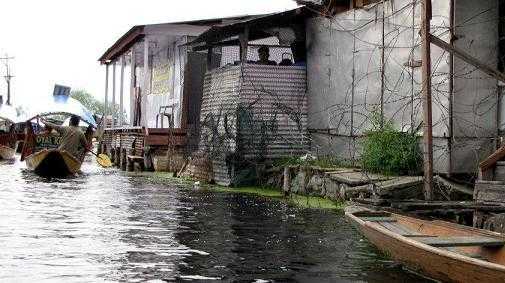
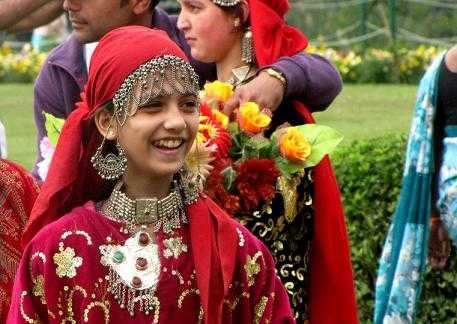
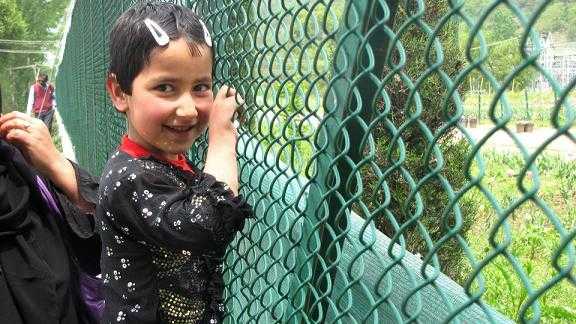
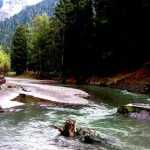
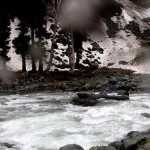


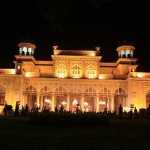
















I was gripped, smitten and transcended to the very land of lakes, shikaras, beautiful mountains and people. Amazing writing!
Umashankar - We don’t really know each other, but I like your writing more than most people’s. Maybe that’s why I would tell you this - There were a hundred moments while I was travelling in a car to see the sights, and squirming because I did not have a pen with me, while strangely whole sentences were just darting about in my head. It was brilliant, yet frustrating because places have never done that to me. I have always felt that being inspired to write just by looking at someone or something is exaggerated and cheesy. But Kashmir had that power over me. So just maybe, you should visit it if you already haven’t.
Right, now since that extremely sissy comment is done with, I must go do something to feel my alpha male self again. Grunt. Let’s throw some spears and see who throws it the farthest? Or do you want to engage in a spitting battle?
Next time, in stead of using the ‘travel writer’ line, perhaps you will recount your Kashmir experience.
Beautifully written though. Looking forward to the next part!!!
Shreya - You can take the man out of a line, but not the lines out a man. Savvy?
Thank you for your opinion. Much appreciated.
Gaurav
you got through an entire post without calling yourself cute. laudable effort, really.
Drat, I knew I had forgotten something.
Abhijeet Singh
How does one’s conscience even allows to write about a place without actually having been there himself? No wonder this story had soul, and it’s far more motivating to go explore the beauty of the place, and of the people through such first hand description. Nicely done, bro!
As for answering the first part of your comment, Abhijeet, it is not always possible to visit every single destination for an organization (be it lack of any kind of resources) . But one’s duty still remains to inform. So, there is a lot of research put into what the team thinks a traveller should know about a destination, and on that basis, the content gets created.
However, you are absolutely right, soul comes with live examples, with a story, with meeting people, with travelling. Thanks for the comment.
Sumegha Chaudhry
EXACTLY my views too! i went to Kashmir last month and it has so much more than its picturesque beauty and ‘heaven’ tag. it’s more about talking to the people there and trying to understand how their life is so different from the rest of the people of India, how they have coped up with their existence in a war-torn state, how Army ‘rules’ there…it’s not easy to even begin imagining how they survive among the torture and insurgency. though yes, things are definitely looking brighter. Srinagar is bustling now and so many tourists were there, from North to the South of India. it’s a beautiful state of India, but also a reminder of the grim reality of thousands of innocent people savaged by a war which has a very bleak possibility of ending anytime soon.
although i have never been to kashmir .. i could sense the the picture you were trying to project. Amazing writing
Well, there really couldn’t be too many better things for a writer to hear, eh! Thanks Mithil.
Thanks Mithil.
Sandeep Ingilela
Great post this. I have traversed most of South India and I could not go to lands north of Vindhya. Will add it to my bucket list. Thanks for sharing.
You can also add Ladakh to the bucket list. Same state, but so different. If Kashmir’s a pretty girl, Ladakh is its alpha male counterpart, rugged, silent, imposing. Some of the places in Himachal are very nice too, but we must have some variety eh, so lets go for Rajasthan’s history.
Heh, thanks for liking the post Sandeep.
a travel writer also has the power to make distant strangers sitting in cooled cubicles feel the warmth of that breeze… beautifully written. You’re growing as a writer, beautifully.
Heh, or maybe not as a writer, just as a man. You still remain my favourite critic.
A real good start, waiting for the next parts to follow
Part Two is now up Arnab. You can read it here ->
http://www.weareholidays.co.in/blog/?p=497
This is really fascinating, You’re a really skilled blogger. I have joined your feed and appear forward to seeking more of your superb post. Also, I have shared your internet site in my social networks!
Flattered, Tom!
Its like you read my mind! You seem to know a lot about this, like you wrote the book in it or something. I think that you could do with some pics to drive the message home a bit, but instead of that, this is wonderful blog. A great read. I’ll certainly be back.
I just want to tell you that I’m very new to weblog and really savored your blog site. Almost certainly I’m planning to bookmark your site . You absolutely come with perfect writings. Thank you for sharing with us your blog.
I simply want to mention I am beginner to blogs and definitely liked this website. Very likely I’m going to bookmark your website . You actually come with remarkable writings. Thanks a lot for sharing with us your blog site.
Gulmarg, Pahalgam and Sonmarg (Explored) | WeAreHolidays Articles
[...] say that Kashmir is beautiful would be to state the obvious. The gorgeousness of Kashmir has been immortalised in many movies, [...]